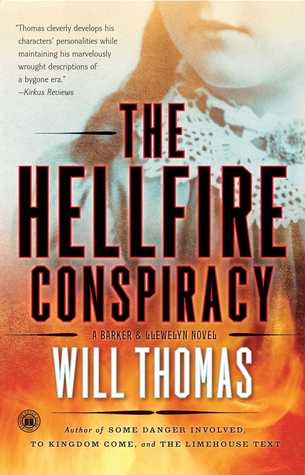 The Hellfire Conspiracy (Barker & Llewelyn, #4) by Will Thomas
The Hellfire Conspiracy (Barker & Llewelyn, #4) by Will Thomas Format: ebook
Source: purchased from Amazon
Formats available: hardcover, paperback, ebook, audiobook
Genres: historical fiction, historical mystery, mystery
Series: Barker & Llewelyn #4
Pages: 338
Published by Touchstone on July 10, 2007
Purchasing Info: Author's Website, Publisher's Website, Amazon, Barnes & Noble, Kobo, Bookshop.org, Better World Books
Goodreads
In the latest adventure in what is "fast becoming one of the genre's best historical-mystery series" (Booklist), roughhewn private enquiry agent Cyrus Barker and his assistant Thomas Llewelyn must track down London's first serial killer.
When Barker and Llewelyn are hired to find a girl from the upper classes who has gone missing in the East End, they assume her kidnapping is the work of white slavers. But when they discover five girls have been murdered in Bethnal Green, taunting letters begin to arrive in Craig's Court from a killer calling himself Mr. Miacca.
Barker fears that Miacca might be part of the Hellfire Club, a group of powerful, hedonistic aristocrats performing Satanic rituals. He must track the fiend to his hideout, while Llewelyn confronts the man who put him in prison.
Dodging muckrakers, navigating the murky Thames under cover of darkness, and infiltrating London's most powerful secret society, The Hellfire Conspiracy is another wild ride that "brings to life a London roiling with secret leagues, deadly organizations, and hidden clubs" (Ron Bernas, Detroit Free Press).
My Review:
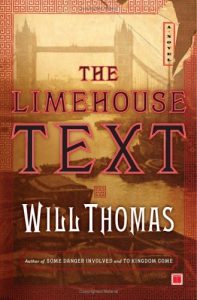 This fourth entry in the marvelously absorbing Barker & Llewelyn historical mystery (after The Limehouse Text) will grab the reader by the throat and not let go until the end – even as one’s gorge rises more than a bit at the nature of the crimes committed.
This fourth entry in the marvelously absorbing Barker & Llewelyn historical mystery (after The Limehouse Text) will grab the reader by the throat and not let go until the end – even as one’s gorge rises more than a bit at the nature of the crimes committed.
A young girl has been kidnapped in Bethnal Green, a down-at-heels neighborhood that seems to be on the cusp between gentrifying and falling straight down into hell alongside its infamous neighbor, Whitechapel.
But the girl is not a resident of the area, she’s just a bored little visitor forced to tag along with her do-gooding mother as she volunteers at one of the many charitable institutions in the area. If Gwendolyn DeVere had been a local girl, it’s sad to say that no one would have cared and the police would have paid no attention whatsoever. Girls and women come to bad ends in Bethnal Green every single day.
Middle and upper class children are an entirely different matter. The police ARE interested in the disappearance of the child of one of the Queen’s elite Life Guards. Howsomever, as Cyrus Barker and his assistant Thomas Llewelyn do their best to bring the girl’s abductor to justice, it seems as if the police are not merely one step ahead of them, but actively hindering their investigation.
Whether because they resent Barker working on their patch, whether it’s merely inter-agency warfare between Scotland Yard and the Thames River Police or even if they are protecting a potentially guilty party out of respect or loyalty is just one of many things that stick in Barker’s craw.
The case, as heinous as it is, looks to be the work of a serial killer. But Barker’s investigation turns up an even more disgusting angle – albeit one not quite as gruesome. Because the death of one well-to-do child has kicked off a hornet’s nest in the middle of the internecine war between privilege and reform.
The reformers want to raise the age of legal consent to 16, because too many young girls are forced in prostitution at much too early an age. The nobility want to retain their privilege to ‘buy’ 13 year old girls and ‘keep’ them until the girls are no longer young and fresh faced, and then have the right to get another – and another.
And it’s a privilege that some of them, at least, are willing to kill for. Including Llewelyn’s old nemesis.
More than one reckoning is due, and Barker and Llewelyn intend to deliver. Whatever it might cost them.
Escape Rating A+: I just wasn’t getting into the book I planned to read, I flailed, I bailed, and found myself back in Victorian England with Barker & Llewelyn, and fell right into The Hellfire Conspiracy.
Which, now that I think about it, is a bit of a pun of a title – although not a funny one. The original club operated about a century before this one, but it’s all in the family. Literally, as the most infamous earlier incarnation was organized by the current reprobate’s grandfather, took place in the same location, and was just as disgusting as this one. And there certainly is a conspiracy of silence regarding their membership and the depraved practices those members engage in, but it’s not the actual conspiracy at the heart of the actual crime spree. Although in a way, it sorta/kinda is.
That the Hellfire Club in either version is not the actual murderer is a bit of a surprise twist, because they are utterly disgusting, and so are their aims and practices. Yet they are able to operate pretty much in plain sight because of their immense privilege.
Part of what makes this series so fascinating is that it takes place at around the same time as the Sherlock Holmes stories, but it operates in an entirely different sphere. Barker and Llewelyn are both middle-class at best, are able to blend in with ‘the quality’ when necessary, but their hearts and their sensibilities are with people of their own class and further down the economic scale.
What made this particular case so absorbing was that it happens at the intersection of so many things, both historical and fictional.
Fictionally, we get a bit more information about both Barker’s and Llewelyn’s still obscure pasts, which is being revealed in tiny bites in each book. HIstorically the political infighting between the Reform Movement and the aristocracy, along with the somewhat exaggerated but real fears of so-called ‘White Slavery’ made the reform cause that much more urgent even as the nobility dug in their heels and the muckraking newspapers of the day breathlessly reported on both sides adds even more hair-raising facets to a case that was already sensational.
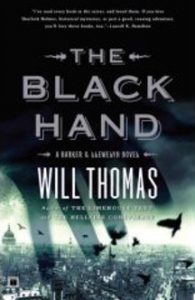 But it’s the characters of Cyrus Barker and Thomas Llewelyn themselves that keep the reader turning pages. Especially in a case like this one, where they go in knowing that the odds of a happy ending are very much against them, but determined to bring as much justice as can be had to all the victims of this atrocity; the living and the dead.
But it’s the characters of Cyrus Barker and Thomas Llewelyn themselves that keep the reader turning pages. Especially in a case like this one, where they go in knowing that the odds of a happy ending are very much against them, but determined to bring as much justice as can be had to all the victims of this atrocity; the living and the dead.
This series has turned out to be THE BEST comfort/go to series, in spite of, or perhaps because of, the dark and terrible places that they have to go to in order to find some measure of justice. Even though, very much like in the Sebastian St. Cyr series, that measure is seldom as full as one would like it to be because some of the perpetrators are above the investigator’s touch.
But that means I will certainly be back for the next book in this series, The Black Hand, the next time I flail, need to bail, and have to find a compelling story to take refuge in.

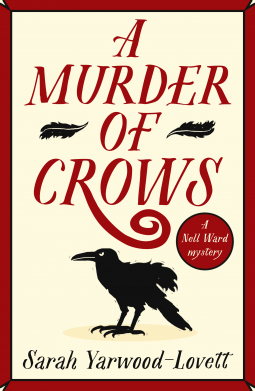 A Murder of Crows by
A Murder of Crows by  Because neither of the two men currently vying for her hand have a chance of fitting into Lady Eleanor’s world no matter how much either or both of them suit Dr. Nell Ward down to the ground. If she can ever manage to tell either of them so and very much vice-versa.
Because neither of the two men currently vying for her hand have a chance of fitting into Lady Eleanor’s world no matter how much either or both of them suit Dr. Nell Ward down to the ground. If she can ever manage to tell either of them so and very much vice-versa.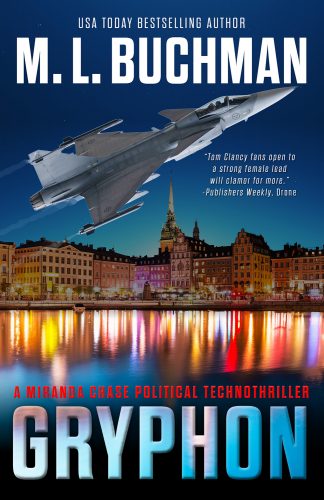 Gryphon (Miranda Chase NTSB #14) by
Gryphon (Miranda Chase NTSB #14) by  Like all of the previous entries in the
Like all of the previous entries in the  Escape Rating A: Gryphon is a hard read for fans of Miranda Chase and her team. Which isn’t to say that it’s not a good read, because it oh-so-definitely is. But rather, it’s hard to see people that we’ve come to like and respect and care about act this observably broken.
Escape Rating A: Gryphon is a hard read for fans of Miranda Chase and her team. Which isn’t to say that it’s not a good read, because it oh-so-definitely is. But rather, it’s hard to see people that we’ve come to like and respect and care about act this observably broken. Not that the tech isn’t fascinating and not that we don’t get a lot of it while following Miranda and her team – but it’s the humans we feel for and with and it’s the human cost of the disaster they’re trying to prevent that make us keep turning pages until they pull literally everyone’s fat out of whatever particular fire they’re facing this time around.
Not that the tech isn’t fascinating and not that we don’t get a lot of it while following Miranda and her team – but it’s the humans we feel for and with and it’s the human cost of the disaster they’re trying to prevent that make us keep turning pages until they pull literally everyone’s fat out of whatever particular fire they’re facing this time around. Demon Daughter (Penric and Desdemona #12) by
Demon Daughter (Penric and Desdemona #12) by 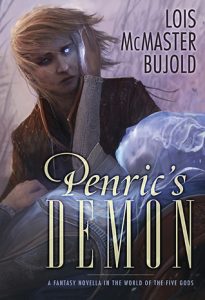 Demon Daughter – not Demon’s Daughter because that would be a different genre altogether – is a delightfully cozy entry in the
Demon Daughter – not Demon’s Daughter because that would be a different genre altogether – is a delightfully cozy entry in the 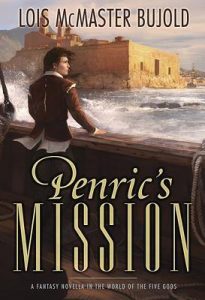 Which is exactly what happens in Demon Daughter, in a roundabout sort of way. The chaos at least.
Which is exactly what happens in Demon Daughter, in a roundabout sort of way. The chaos at least.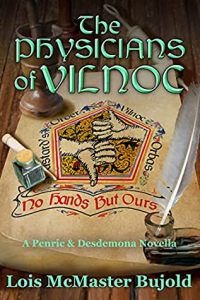 Escape Rating A: This twelfth entry in the
Escape Rating A: This twelfth entry in the 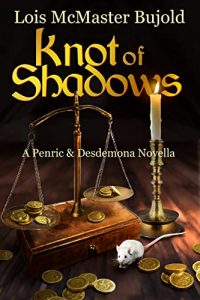 It’s those questions that stick in my mind after finishing Demon Daughter. Because there are entirely too many people in the real world who face that dilemma every day while trying to live their truth even though they’ve been taught by family, faith and community that their truth is a lie.
It’s those questions that stick in my mind after finishing Demon Daughter. Because there are entirely too many people in the real world who face that dilemma every day while trying to live their truth even though they’ve been taught by family, faith and community that their truth is a lie.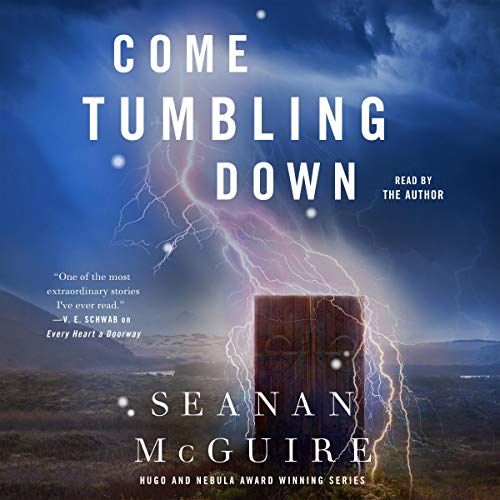 Come Tumbling Down (Wayward Children, #5) by
Come Tumbling Down (Wayward Children, #5) by  I’ve been winding my way through Seanan McGuire’s
I’ve been winding my way through Seanan McGuire’s 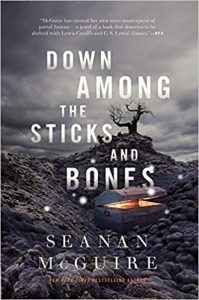 Jack is in dire straits when she returns to the school, and she needs the help of the only friends she can trust to see that, in spite of appearances, she’s still Jack even though she’s in her twin sister Jill’s body. They are the only people who know her well enough to understand that her OCD will not allow her to just adapt to living her life in the unclean thing that murdered her mentor – even if Jill’s full, entire, complete and utterly nefarious plot is to destroy both her sister Jack and the balance that keeps The Moors relatively safe and functional for the human population that was born to a world where vampires contend with mad scientists and drowned gods prey upon ships and shorelines, where the sun only rises behind thick clouds and lightning storms happen whenever the Moon wills it so.
Jack is in dire straits when she returns to the school, and she needs the help of the only friends she can trust to see that, in spite of appearances, she’s still Jack even though she’s in her twin sister Jill’s body. They are the only people who know her well enough to understand that her OCD will not allow her to just adapt to living her life in the unclean thing that murdered her mentor – even if Jill’s full, entire, complete and utterly nefarious plot is to destroy both her sister Jack and the balance that keeps The Moors relatively safe and functional for the human population that was born to a world where vampires contend with mad scientists and drowned gods prey upon ships and shorelines, where the sun only rises behind thick clouds and lightning storms happen whenever the Moon wills it so. Escape Rating A-: The
Escape Rating A-: The 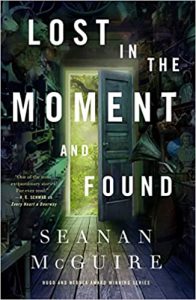 One of the core tenets of the whole, entire,
One of the core tenets of the whole, entire, 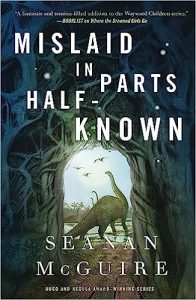 So, on the surface there’s a story about vampires and mad scientists set in a place that the great horror movies might have used for their inspiration – if not their actual setting. Underneath that there’s a deeper story about balances of power and how devastating it can be when those balances become unbalanced. And the story of one heroine who is willing to throw her own body into the breach – along with her sister’s corpse – to preserve that balance at truly any and every cost.
So, on the surface there’s a story about vampires and mad scientists set in a place that the great horror movies might have used for their inspiration – if not their actual setting. Underneath that there’s a deeper story about balances of power and how devastating it can be when those balances become unbalanced. And the story of one heroine who is willing to throw her own body into the breach – along with her sister’s corpse – to preserve that balance at truly any and every cost.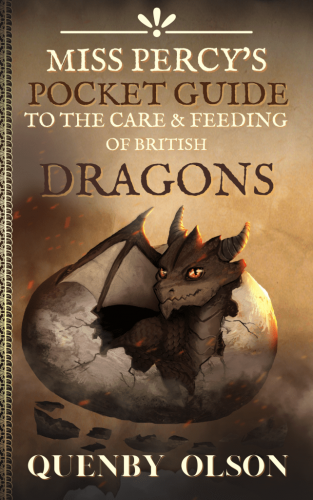 Miss Percy's Pocket Guide to the Care and Feeding of British Dragons (Miss Percy Guide, #1) by
Miss Percy's Pocket Guide to the Care and Feeding of British Dragons (Miss Percy Guide, #1) by 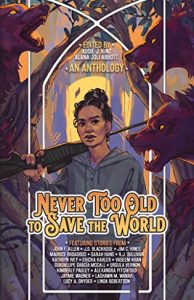 Escape Rating A-: I picked this up because I saw it on a list of cozy fantasies, and it seemed like the perfect book for a chilly winter weekend. And it was calling my name rather loudly, with occasional puffs of smoke for emphasis.
Escape Rating A-: I picked this up because I saw it on a list of cozy fantasies, and it seemed like the perfect book for a chilly winter weekend. And it was calling my name rather loudly, with occasional puffs of smoke for emphasis.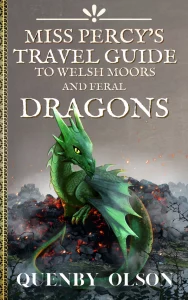 I got so deeply into the story that it took me halfway through before the dragon’s name dropped the clue-by-four on my head – just as the villains attempted to throw the creature from a second-story window. (The dragon has wings, so things did not go AT ALL according to their dastardly plan.) They named the dragon Fitz, after, of course, Fitzwilliam Darcy. Making the ‘pocket’ description of Miss Percy’s Pocket Guide to the Care & Feeding of British Dragons – you guessed it and I’m chagrined at how long it took me to – Pride and Prejudice and Dragons!
I got so deeply into the story that it took me halfway through before the dragon’s name dropped the clue-by-four on my head – just as the villains attempted to throw the creature from a second-story window. (The dragon has wings, so things did not go AT ALL according to their dastardly plan.) They named the dragon Fitz, after, of course, Fitzwilliam Darcy. Making the ‘pocket’ description of Miss Percy’s Pocket Guide to the Care & Feeding of British Dragons – you guessed it and I’m chagrined at how long it took me to – Pride and Prejudice and Dragons!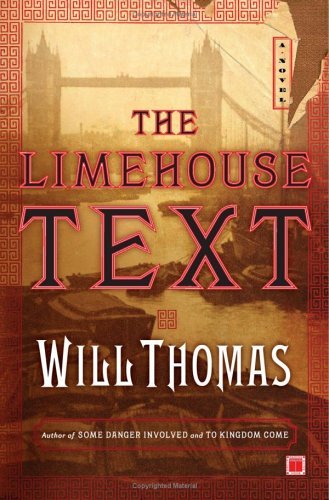 The Limehouse Text (Barker & Llewelyn, #3) by
The Limehouse Text (Barker & Llewelyn, #3) by 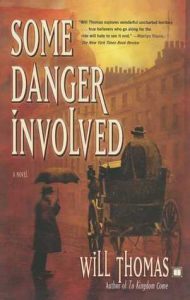 I was feeling in a bit of a murder-y mood this week – reading-wise at least. Which seems entirely fitting as we’re ‘killing’ 2023 this weekend and ringing in 2024.
I was feeling in a bit of a murder-y mood this week – reading-wise at least. Which seems entirely fitting as we’re ‘killing’ 2023 this weekend and ringing in 2024. 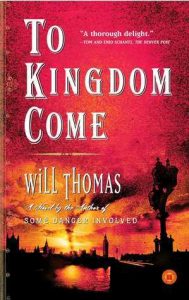 Escape Rating A+: One thing drove me utterly bananas during my reading of The Limehouse Text. I had the vague impression, not that I’d read this before, but that the Jeremy Brett Sherlock Holmes series had also tackled a story set in Limehouse – London’s Victorian version of Chinatown – but couldn’t track down precisely which story. I think it may have been
Escape Rating A+: One thing drove me utterly bananas during my reading of The Limehouse Text. I had the vague impression, not that I’d read this before, but that the Jeremy Brett Sherlock Holmes series had also tackled a story set in Limehouse – London’s Victorian version of Chinatown – but couldn’t track down precisely which story. I think it may have been 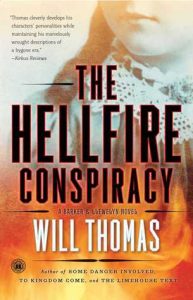 In the end, this is a clever, convoluted mystery, solved but not truly resolved by fascinating characters, steeped in a culture and a perspective that was not treated with any kind of respect in its time and about which stereotypes promoted during this period still linger. The reader is inexorably drawn in by the mystery and the setting, and left with both the satisfaction of at least some just desserts being served – as a mystery should – while still reeling from the marvelously presented microcosm of all the reasons why ‘colonialism’ is such a disgustingly dirty word in so many places around the globe to this very day.
In the end, this is a clever, convoluted mystery, solved but not truly resolved by fascinating characters, steeped in a culture and a perspective that was not treated with any kind of respect in its time and about which stereotypes promoted during this period still linger. The reader is inexorably drawn in by the mystery and the setting, and left with both the satisfaction of at least some just desserts being served – as a mystery should – while still reeling from the marvelously presented microcosm of all the reasons why ‘colonialism’ is such a disgustingly dirty word in so many places around the globe to this very day.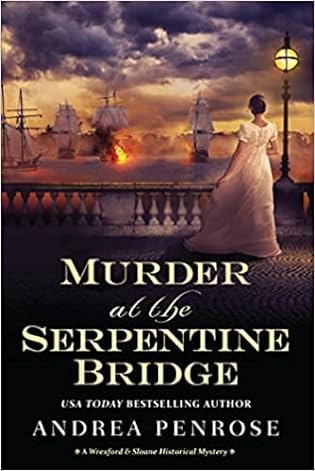 Murder at the Serpentine Bridge (Wrexford & Sloane, #6) by
Murder at the Serpentine Bridge (Wrexford & Sloane, #6) by  As the previous book in this series,
As the previous book in this series, 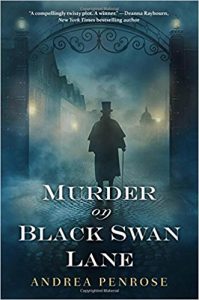 Escape Rating A: This was the right book at the right time, and I clearly waited enough time after
Escape Rating A: This was the right book at the right time, and I clearly waited enough time after  Meanwhile, everyone is chasing everyone else’s tails into danger, as the government’s intelligence services are unwilling to let the right hand know what the left hand is doing (shades of yesterday’s book) and everyone is unwittingly keeping vital clues from even their nearest and dearest.
Meanwhile, everyone is chasing everyone else’s tails into danger, as the government’s intelligence services are unwilling to let the right hand know what the left hand is doing (shades of yesterday’s book) and everyone is unwittingly keeping vital clues from even their nearest and dearest.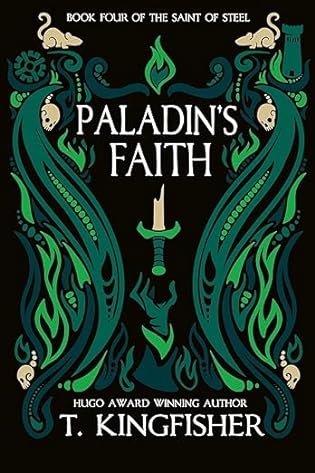 Paladin's Faith (The Saint of Steel, #4) by
Paladin's Faith (The Saint of Steel, #4) by 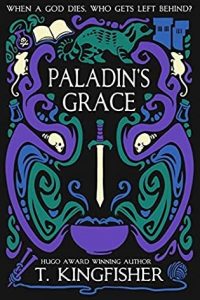 There’s a classic saying about large organizations at cross-purposes within themselves, that the right-hand doesn’t know what the left hand is doing. Marguerite Florian’s problem with the Red Sail mercantile empire is that their “right hand does not know who the left is killing”.
There’s a classic saying about large organizations at cross-purposes within themselves, that the right-hand doesn’t know what the left hand is doing. Marguerite Florian’s problem with the Red Sail mercantile empire is that their “right hand does not know who the left is killing”.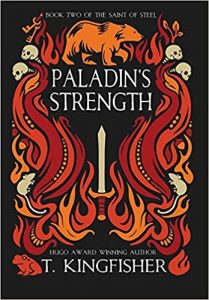 Marguerite just has to stay alive long enough to find the artificer. For that, she’ll need bodyguards who can’t be bribed or bought, seduced or suborned. She needs a paladin – or two.
Marguerite just has to stay alive long enough to find the artificer. For that, she’ll need bodyguards who can’t be bribed or bought, seduced or suborned. She needs a paladin – or two.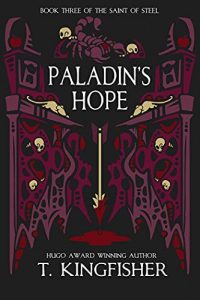 Howsomever, by the nature of that waiting game a LOT of this story is extremely interesting character development with a fair bit of adding to the depth of the worldbuilding but one does, like one of the side characters, Davith, want them to just ‘get on with it’ one way or another, either to get a move on in their mission or just make a move on each other.
Howsomever, by the nature of that waiting game a LOT of this story is extremely interesting character development with a fair bit of adding to the depth of the worldbuilding but one does, like one of the side characters, Davith, want them to just ‘get on with it’ one way or another, either to get a move on in their mission or just make a move on each other.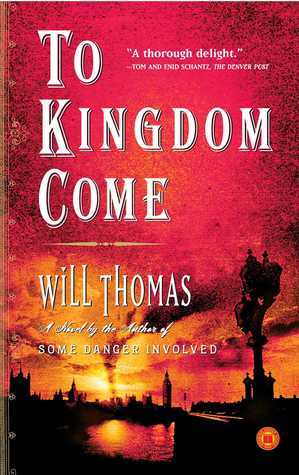 To Kingdom Come (Barker & Llewelyn, #2) by
To Kingdom Come (Barker & Llewelyn, #2) by 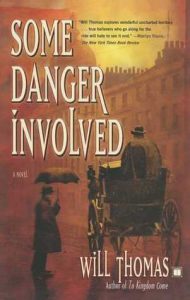 After the events of the first marvelous book in this series,
After the events of the first marvelous book in this series,